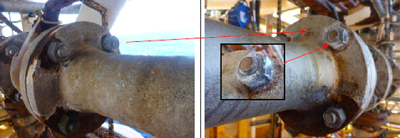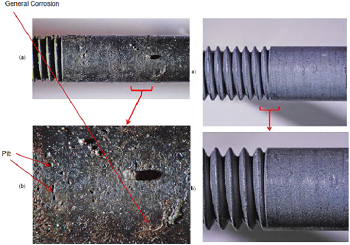Enhancing Valve Component Performance Through Design by Nanolamination
Today, the total cost of corrosion in the U.S. exceeds $1 trillion annually—and from oil & gas operations to municipal infrastructure, metal-based components like valves are in some of the most corrosive environments imaginable.
#materials #components
Current Solutions to Combat Corrosion
When assessing existing materials solutions, system operators are generally left with one of two options. The first is to select a low-budget material with the understanding it may not withstand aggressive environments for extended periods. Examples would be offshore rigs or underground operations, which might mean frequent replacement, leading to increased downtime. A common choice in this category is hot dip galvanized metals, which offer a compelling price point.
The second solution is to choose a higher-performance material such as tungsten carbide and emerging diamond-like carbon materials. However, the cost of these materials can be very high.
An third solution is now available, with a design and manufacturing process that can deliver high-performance valves at a price point that is cost-competitive with traditional component manufacturing processes.
Nanolaminated Materials
Nanolaminated materials represent a new way to produce metals-based components. By leveraging phenomena that occur at the interfaces in layered materials, a unique manufacturing process is controlled to create nano-scale layers—between 10 and 100 nanometers in thickness. Although architected using commonly available raw materials, the resulting alloys achieve superior performance to that of traditional materials. These alloys can be manipulated in myriad combinations to achieve better corrosion resistance, elastic modulus, strength, hardness, and fracture toughness combinations.
History of Nanolamination
The concept of laminated metals is by no means new–in fact, the technique can be found in the Tower of Giza, which was constructed in 2750 BC. More recently, in the beginning in the 1970s, scientists began testing the performance of multilayered materials. Several studies in recent decades have proven that nanolaminated alloys can unlock a number of benefits, as pictured below.
It is important to note that these nanolaminated materials were typically produced via a sputtering process, which limited applications of these materials to academic research and small-scale production. However, recent advances in manufacturing processes for nanolaminated materials has enabled the commercial production of these materials in coating applications using large-scale techniques similar to electroplating operations.
Delivering Improved Corrosion Resistance in the Field
The United States Coast Guard carried out an independent analysis and field trial of a nanolaminated zinc-based coating system over the period of two years. Findings of this field trial confirmed zinc nanolaminates offer superior performance when compared to current industry solutions (Figure 1). Considering that design life can be 25 years or more, service conditions range from sub-zero to 400 C, and thickness of any coating is limited by the thread tolerances, the mitigation of corrosion is challenging. Nanolaminated coatings have the potential to offer a protective barrier that is effective within the thickness constraints of thread tolerances along with a seemingly unique corrosion limiting feature within the nanolaminated metallic coating.
Field trials of the nanolaminated zinc-based coatings are currently in progress in a tropical offshore environment to verify laboratory results. Nanolaminated zinc-based coatings, cadmium + poly tetra fluoroethylene (PTFE), and spin-dip galvanize coatings were applied onto steel studs, nuts and washers. These fastener sets were then used on 12 separate flanges at four different locations around the offshore platform. Fasteners were arranged so that a least one of each type of bolt coating is featured on each flange.
The first visual evaluation occurred after 30 days of exposure (Figures 2-4). The following photos of three fastener sets, from two different locations, show some white rust (ZnOH) and red rust (Fe2O3) respectively on the spin-dipped galvanized sets and cadmium + PTFE-coated fastener sets but no significant deterioration. Further visual observations, recorded by an independent third party, after six months of exposure (Figure 5) indicate further progression of corrosion revealed by the appearance of red rust on the galvanized and Cd + PTFE coated fasteners. After six months, the zinc nanolaminate-coated bolts showed no visual indication of any changes.
Corrosion is clearly a major challenge facing several industries and, as the U.S. Coast Guard case study above illustrates, nanolaminated alloys have been proven to improve corrosion resistance. With further research and development, this process could extend the life and reliability of valves in a variety of corrosive and abrasive service conditions.
Christina Lomasney is the co-founder, president and CEO of Modumetal. Reach her at info@modumetal.com.
RELATED CONTENT
-
Control Valves for Hydrogen Applications
Proper sizing, material selection and monitoring are as important as ever.
-
Understanding and Selecting Valve Flanges, Pt. I: Design and Standards
Because flanges allow the assembly and maintenance of system components without the need for cutting and welding pipe, they play an important role in piping systems.
-
Selecting Non-metal Materials for Valve Components and Coatings
Non-metallic materials are commonly used for valve components, and the selection of non-metallic materials for valve design and for application-specific conditions is critical to ensuring product reliability.














 Unloading large gate valve.jpg;maxWidth=214)


